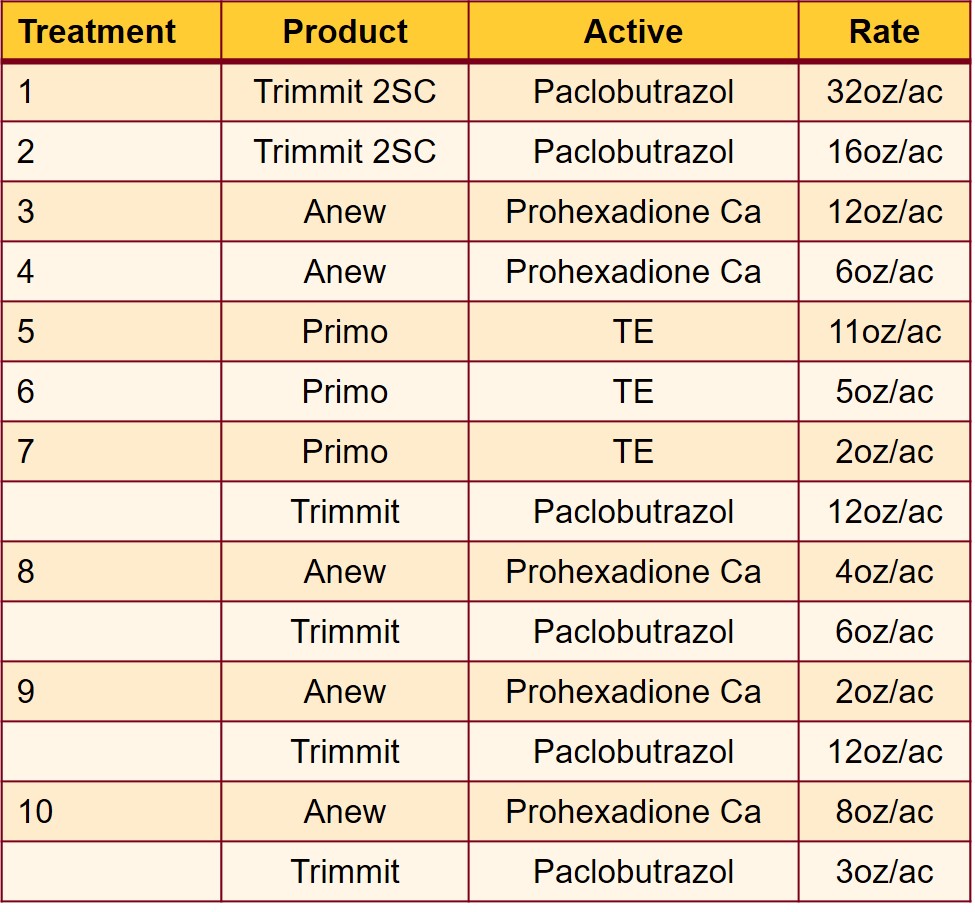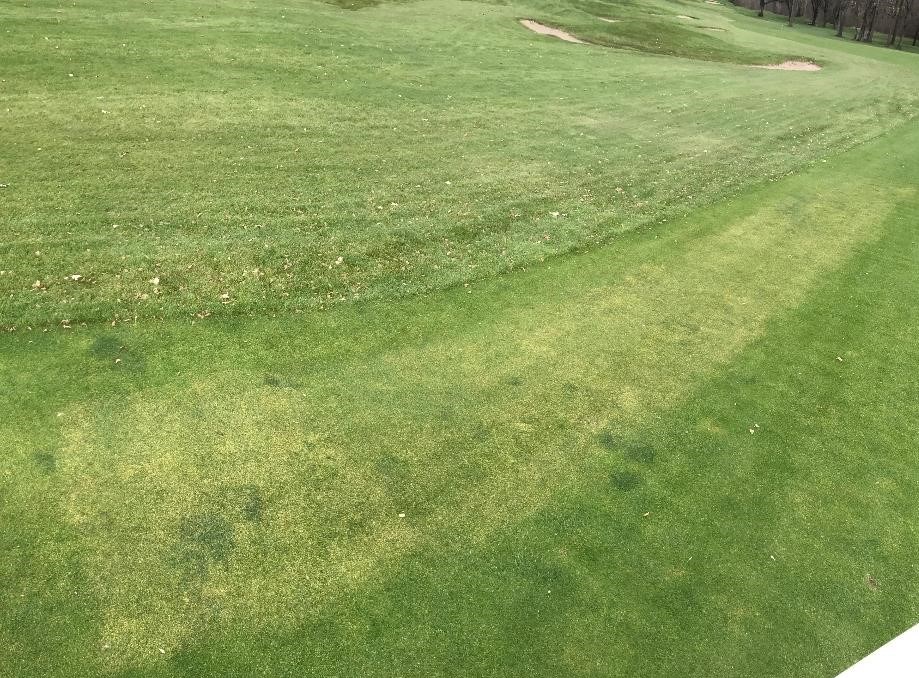Paclobutrazol, prohexadione calcium, and trinexapac‐ethyl (TE) are plant growth regulators (PGRs) that inhibit the synthesis of the plant growth hormone gibberellin. They can be used on golf greens to inhibit annual bluegrass (Poa annua) growth or to increase the plant health of desirable turfgrasses.
These products are not normally applied late in the season. We partnered with several MGCSA members to examine how various turfgrass species respond to fall applications and whether there is any benefit to late season application.
Research questions
Will PGRs applied in early October injure turfgrass? How will late-fall PGRs impact spring turfgrass quality and recovery? Are mixture combinations better than single product applications? What effect does application rate have?
Study locations
- TPC Twin Cities (Superintendent – Mark Michalski)
- Fox Hollow Golf Club (Superintendent – Corey Heasley)
- The Wilderness at Fortune Bay (Superintendent – Vince Dodge)
Treatments
We applied a total of 10 PGRs – paclobutrazol, prohexadione calcium, and trinexapac‐ethyl – to the three sites in late October. Treatments are shown in Table 1.
Results
- Turf was injured from all treatments at Fox Hollow (annual bluegrass and Kentucky bluegrass) as of October 24th (Figure 1).
- No treatment differences were detected at The Wilderness (creeping bentgrass) as of October 13th, 2017 (Figure 2).
Takeaway
Late fall-applied PGRs are risky. They may severely injure turf and delay spring recovery or they might just be a waste of time and money; of course, neither is a desirable outcome. We suggest following current guidelines to terminate applications by mid-September.
Contact Maggie Reiter, Extension Educator - Turfgrass <[email protected]> for more information on this program.


